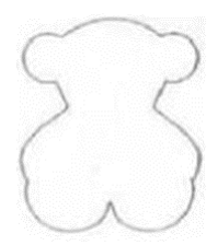BACKGROUND TO THE DISPUTE
On February 2009, Tous SL, applied for and registered the following EUTM for goods, inter alia, in class 14, namely jewellery. On May 2017, Apart sp. z o.o. filed an application for a declaration of invalidity of the registered EUTM, on the basis of art. 51.1 a) of Regulation 40/94, read in conjunction with art. 7.1 a), b), d) and e).
 On November 2019, the Cancellation Division rejected the application for a declaration of invalidity in its entirety. Consequently, Apart sp. z o.o. filed a notice of appeal against the decision of the Cancellation Division, which was also dismissed, since the Board of Appeal considered that the evidence and arguments submitted were contradictory and insufficient for showing that the contested mark was devoid of distinctive character.
On November 2019, the Cancellation Division rejected the application for a declaration of invalidity in its entirety. Consequently, Apart sp. z o.o. filed a notice of appeal against the decision of the Cancellation Division, which was also dismissed, since the Board of Appeal considered that the evidence and arguments submitted were contradictory and insufficient for showing that the contested mark was devoid of distinctive character.
Apart sp. z o.o. decided to file an appeal to the General Court against the contested decision.
DECISION
In this case, the appeal was dismissed, confirming the contested decision of the Fifth Board of Appeal.
In essence, the applicant opponent criticized the Board of Appeal for having found that the contested mark had distinctive character. As a preliminary remark, we have to consider that the Board took the view that the mark was a representation of the goods at issue, and assessed the distinctive character using the criterion applicable to three-dimensional marks, which is no different from those applicable to other categories, but the relevant public’s perception is not necessarily the same as it when facing word or figurative marks, where the appearance is independent from the products it denotes, since consumers are not used to identify the commercial origin of products by its appearance.
In this sense, the Court started indicating that the fact that jewels may take the shape of a teddy bear is not sufficient to consider that the contested mark consists of a two-dimensional representation of the shape of those goods, especially taking into account that jewellery includes rings, necklaces or earrings, which are likely to bear the sign of which that mark consists, but not to take the shape of it. Notwithstanding this finding, the Court continued stating that the Board of appeal was right when it found that the contested mark could be interpreted as the outline of a teddy bear, but also as a fantasy figure, since it requires some imagination or fantasy on the part of consumers to associate the mark with a teddy bear. In any case, the shape has no connection with the goods at issue. Moreover, the Court considered that Apart sp. z o.o. had not been able to prove that, on the relevant date, the contested mark was commonplace on the jewellery market, and that it was therefore devoid of distinctive character.
Finally, the applicant opponent alleged that the contested mark essentially served to an aesthetic function, without indicating the origin of the goods. The Court remembers that the fact that the shape of a mark may be pleasing o attractive is not sufficient to exclude it from registration.
The appeal must be dismissed and, consequently, the Board of Appeal correctly rejected the application for a declaration of invalidity.
[Case R 591/21, ECLI:EU:T:2023:433, 26/07/2023]


 Español
Español Deutsch
Deutsch